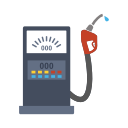
In Ivory Coast, Global Rubber Glut Erases Profits
Faizan Hashmi Published August 15, 2018 | 10:48 AM

GrandAl�p�, C�te d'Ivoire, (UrduPoint / Pakistan Point News - 15th Aug, 2018 ) :"We're not earning anything from it any more, we have nothing," says a rubber farmer in Ivory Coast, Africa's top producer, where revenues from natural rubber have been slashed by global oversupply.
Over the past decade, world rubber prices skyrocketed only to quickly slump to the point where they are now a fifth of what they once were because of a glut in the market, with many Ivorian producers seeing their profits vanish into thin air.
Farmers and the country's natural rubber association APROMAC, which represents the sector, also blame the high state taxes.
Ivory Coast accounts for 60 percent of Africa's rubber output and ranks seventh in terms of global production, with a predicted output of 720,000 tonnes in 2018, up from 468,000 tonnes in 2016 and 603,000 last year.
And that figure is set to grow by 20 percent over the next three years.
But despite the increase in production, individual income has fallen.
The history of rubber production in Ivory Coast dates back to France's epic defeat in the 1954 battle of Dien Bien Phu in Vietnam.
That triggered the collapse of France's colonial empire in Indochina, and the loss of its vast rubber plantations in the region, which were key for manufacturers like French tyre maker Michelin.
It was then that the first rubber seeds were sown in Ivory Coast, which had been under French colonial rule since the late 19th century, although the production of latex there would remain insignificant until 2009.
In that year, rubber production surged thanks to an ambitious investment plan by the rubber development foundation (FDH) worth 40 million Euros ($56 million at the time).
Over the past nine years, the plan has funded the creation of 110,000 hectares (270,000 acres) of new rubber plantations as well as new rural roads.
It has also funded training, notably in the art of rubber tapping, a meticulous process in which farmers make circular incisions in the tree's bark to allow its milky sap, or latex, to collect in a cup attached to the trunk.
And the farmers were quickly able to benefit from global prices which back in 2010 reached $5,000 per tonne as Asian rubber production fell, causing a drop in supply at a time when the oil price was also high.
Rubber prices are linked to that of crude because of the tyre industry, which uses a mix of natural and synthetic petroleum-based products.
But the sudden explosion of the rubber industry was to cost the country's all-important cocoa sector, Ivory Coast being the world's biggest producer.
Even in regions in the east and west of the country where cocoa reigned supreme, farmers caught up in the frenzy pulled up their established crops to plant rubber seedlings.
Rubber trees can be tapped for their latex for 10 months of the year and "generate a consistent monthly income, unlike cocoa which is harvested twice a year," explains rubber producer Justin Okingni.
Related Topics
Recent Stories

Govt bringing reforms in energy, revenue collection, SOEs: Aurangzeb

Pakistan, New Zealand to face off in 2nd T20I match at Rawalpindi today

Currency Rate In Pakistan - Dollar, Euro, Pound, Riyal Rates On 20 April 2024

Today Gold Rate in Pakistan 20 April 2024

Tennis: ATP Barcelona Open results - 1st update

Swiatek's perfect 10 in Stuttgart as Vondrousova stuns Sabalenka

Arandu's roads closed due to flooding

Oil tanker catches fire in Islamabad’s Blue Area

Pakistan committed to ensure safety of foreign nationals: FO

Tennis: WTA Stuttgart results - 1st update

Four passengers injured as train hit an empty vehicle

Over- speeding bus crushed to death two bike riders
More Stories From Business
-

Govt bringing reforms in energy, revenue collection, SOEs: Aurangzeb
1 hour ago -

Currency Rate In Pakistan - Dollar, Euro, Pound, Riyal Rates On 20 April 2024
5 hours ago -

Today Gold Rate in Pakistan 20 April 2024
5 hours ago -

Pakistan aims to agree outline of new IMF loan in May - Finance Minister
16 hours ago -

FTO commends FBR's role for prompt resolution of tax payers’ issues
16 hours ago -

BISP embraces E-procurement: launches inaugural tender
18 hours ago
-

Business community indebted to Ahsan Zafar for his unprecedented services: Yousuf Rajput
18 hours ago -

China auto sector steps up Europe push with Spain plant
18 hours ago -

Condolence reference held in memory of FBR's officials
19 hours ago -

Health activists ring alarm bells over 10-stick cigarette pack
19 hours ago -

Karachi receives maiden direct flight of Azerbaijan Airlines from Baku
19 hours ago -
PSX turns bullish, gains 619 points
20 hours ago
















